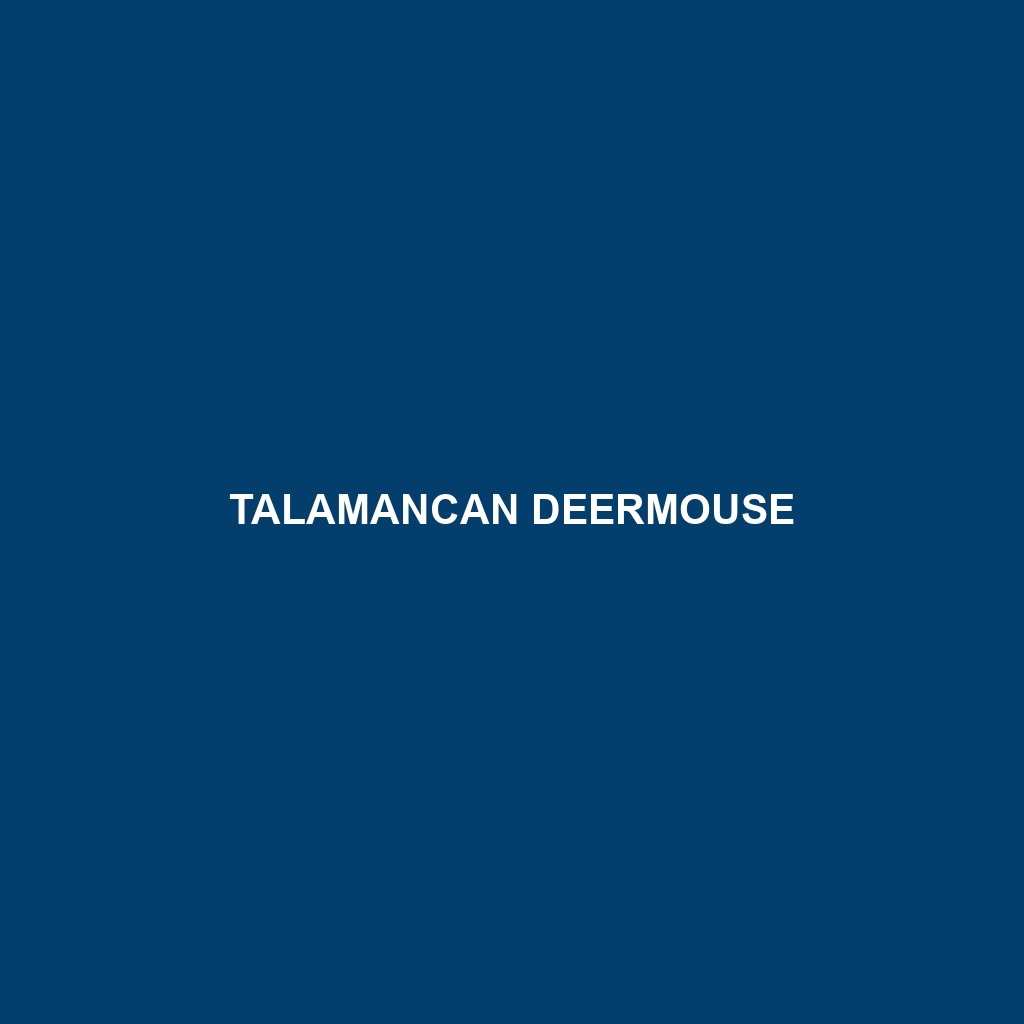Talamancan Deermouse
Common Name: Talamancan Deermouse
Scientific Name: Peromyscus talamancae
Habitat
The Talamancan Deermouse is primarily found in the highland regions of Central America, particularly throughout the Talamanca mountains of Costa Rica and western Panama. This species prefers montane forests characterized by dense vegetation, cool temperatures, and high humidity levels, making these environments crucial for its survival.
Physical Characteristics
Talamancan Deermice are small in size, typically measuring between 9 to 12 inches in total length, including their long, hairy tails. Their fur is soft and varies in color from light brown to grayish, often with a white underbelly. Distinctive features include large eyes and ears, which enhance their ability to navigate through dense underbrush. These rodents have sharp claws suited for climbing trees and foraging on the forest floor.
Behavior
Talamancan Deermice are primarily nocturnal, exhibiting various behaviors during nighttime foraging expeditions. They are known for their agility and ability to climb, often seen navigating through trees in search of food. Additionally, these mice are social animals, frequently found in small groups, communicating through a series of vocalizations and scent markings.
Diet
The diet of the Talamancan Deermouse primarily consists of seeds, fruits, and insects, making them omnivorous in nature. They play an essential role in seed dispersal within their habitat, contributing actively to the ecological balance. These mice have adapted their feeding habits to take advantage of seasonal food availability, foraging not only on the ground but also in trees.
Reproduction
Talamancan Deermice generally breed throughout the warmer months, with peak breeding occurring from late spring to early summer. The female typically gives birth to a litter of 3 to 5 young after a gestation period of around 30 days. The offspring are born blind and helpless, relying entirely on their mother for nourishment until they are weaned at about three weeks of age.
Conservation Status
The current conservation status of the Talamancan Deermouse is considered “Vulnerable” due to habitat loss and fragmentation caused by deforestation and agricultural expansion. Protection of their montane forest habitat is crucial for the survival of this species.
Interesting Facts
One fascinating aspect of the Talamancan Deermouse is its ability to survive in diverse environmental conditions, showcasing a remarkable adaptability that allows it to venture into varying altitudes. Furthermore, these mice are known to have a unique social structure, often displaying curious behaviors such as grooming and play among group members.
Role in Ecosystem
The Talamancan Deermouse plays a vital role in its ecosystem by acting as both a predator and prey. As seed dispersers, they contribute to forest regeneration and biodiversity. Additionally, they serve as a food source for a variety of predators, including birds of prey and larger mammals, thereby maintaining the food web dynamics in their mountainous habitat.
